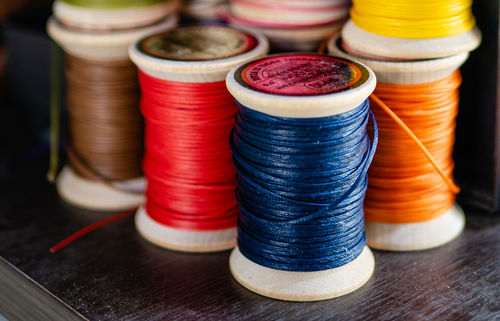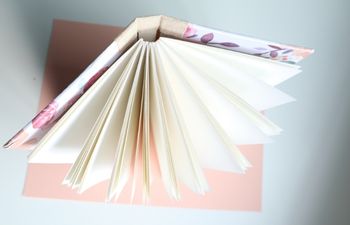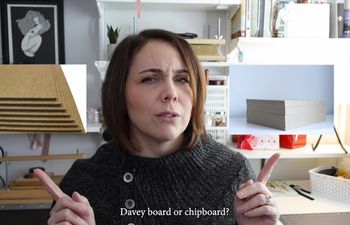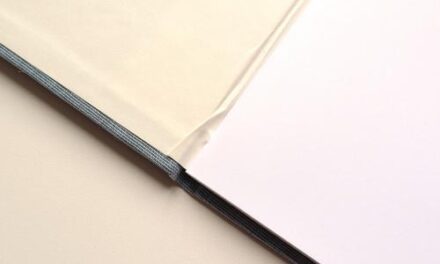Bookbinding materials are the second highest expense in a bindery (labor is always first), so learning how to reduce and optimize these costs is important. This is especially true if you’re looking for easy ways to increase profit margins in your business.
Buying bookbinding materials in bulk has a few notable benefits:
- it’s cost-effective. For example, bulk buys usually include free shipping
- it saves time. Buying in bulk means less time spent researching and ordering
- it leads to profitability. Lower per-unit costs lead to higher profit margins
Now before you go out and start buying all of your bookbinding materials in bulk, slow down and consider whether or not the purchase will actually reduce costs in the long term. For example, it doesn’t make sense to buy beeswax in bulk unless you’re running a professional bindery.
It’s taken a lot of trial and error, but these three bookbinding materials tend to save me the most money when purchased in bulk:
- Text and fine papers
- Adhesives
- Book cloth
I buy these for several reasons:
- Bulk buys typically include free shipping
- Cutting fees pay for themselves in time and energy savings
- I know exactly how many books I can make, so buying other materials is straight forward
Text and art papers
Text and art papers can be purchased by the sheet, ream or in rolls. Since I don’t have a large cutter at home, I choose to order pre-cut 70lb text paper by the ream for my most popular sizes (A5 and A6).
Fine papers are a little different. Some are available by the roll, while others can only be purchased in large sheets. In each case, discounts are usually offered for larger quantities.
As an example, I really like the look and feel of Rives BFK paper for wedding albums and guest books. To meet current demand and future need, I buy 25 or more large sheets (22″ x 30″) at one time.
Drawing and water color books are usually available in spiral or side bound art books in various sizes. Unfortunately, these books are more expensive to purchase and often don’t have the right grain direction to support the book you’re creating. Save money and buy these in bulk stacks or by the roll.
I personally prefer to buy Canson drawing paper and Arches water color paper by the roll. Most art stores will carry these in stock online, so check there first.
Pro tip: buy paper in the most common color(s). Whites, taupes and browns tend to coordinate with many different materials.
Adhesives
Modern bookbinders tend to use the following three adhesives most often in their binderies: PVA (poly-vinyl acetate), wheat paste (hot and cold) and Methyl Cellulose. In the United States, PVA is sold in ounces or gallons. Cold wheat paste and Methyl Cellulose are both sold in powder form by the pound (starting at 1/2 pound).
When I started making books, it seemed crazy to order a gallon of PVA or a pound of cold wheat paste or Methyl Cellulose. Several months later, I regretted not buying a higher quantity of both. Today, I will order 2-3 gallons of PVA and one pound of cold wheat paste and Methyl Cellulose per year. Before your mouth flops open in disbelief (haha), know this: most professional binderies by PVA in 5-gallon buckets and order cold wheat paste and methyl cellulose powder in 5 to 44 lb bags!
Pro tip: PVA doesn’t do well in the cold, so be sure to buy in mild weather (usually June or July depending on your location).
Book cloth
Manufactured book cloth is either starched, backed or coated. Each of these treatments offers different advantages, but some are more expensive than others. It’s important to know about each before you start buying them up by the roll. You should also understand your audience and their preference for color.
It took me about three years and way too much money to figure out which colors my customers really liked. Today, I prefer to buy 3 or 5 yard rolls of cloth in black, navy blue or burgundy. One-off colors like pink, green, purple or yellow are better to purchase in lower quantities unless it’s popular with your customers.
Pro tip: if you can’t afford multiple colors by the roll, buy a dark option like black. Dark colors are great at hiding minor imperfections and blemishes and coordinate with almost any cover material.
Other items to consider buying in bulk
Depending on your focus, there could be other items that make sense to buy in bulk. Here are a few I will eventually source in bulk to increase profit:
- linen thread
- tapes and cords
- Japanese tissues
- mull or tarlatan
One last suggestion
If you find a material you really like working with, try reaching out to the wholesaler directly. Skipping the middle man is always a quick way to improve per-unit cost and increase profit margins. Best of luck to you and your bindery!
More bookbinding goodness
✨ What tools do I need to get started bookbinding?
- Bookbinding Tools & Supplies Quick Start Guide – learn all about book making tools, which to buy first & where to go online
- Pick up my popular Complete Starter Bookbinding Tools Kit – all the bookbinding essentials in one spot
🌟 Looking for a simple way to start making books?
Try a Complete Book Materials Kit. Each one has everything you need (+ tutorials & videos) to make a beautiful book without all the fuss.
Thank you for taking me along on your book making journey!
Misty












